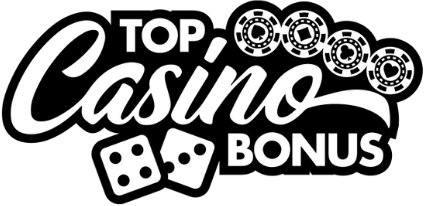Understanding the roulette wheel and table layout
Most folks walking into a casino for the first time see the roulette wheel and table as some mysterious dance of chance, half math, half magic. What they don’t realize is that understanding the wheel’s layout and the table design isn’t just about memorizing numbers or betting colors. It’s about learning how the structure itself shapes the very soul of the game. Miss that, and you’re spinning your wheels, literally and figuratively.
Table of contents
Why the wheel’s layout hides more than meets the eye
The novice sees numbers and colors. The expert sees balance, symmetry, and psychological misdirection. A standard European wheel has 37 numbers, 1 through 36 plus a single 0. Its American cousin adds an extra green devil, the double zero, throwing off that precious equilibrium that keeps the house edge sharper than a barber’s straight razor.
The genius of number positioning
Here’s the kicker: the numbers aren’t arranged sequentially. Instead, they follow a pattern specifically designed to confuse pattern-seekers and lure in the mathematically curious. For example, on a European wheel, no two consecutive numbers sit side by side. Even and odd, high and low, black and red, all are intentionally scattered to defy logic.
Back when I worked at a Monte Carlo casino in the late ‘80s, we once had a player insist he could follow a “hot zone” on the wheel. He charted spins for hours. By the end of the night? The house thanked him kindly, for funding its next furniture upgrade. That’s why chasing patterns on the wheel without knowing its deeper design is a fool’s errand. The layout is built to resist predictability.
How the table layout complements the wheel
Now, while the wheel is a marvel of mathematical misdirection, the table is a sales floor, designed to guide, tempt, and occasionally fleece the unprepared. It encourages a mix of strategic and frivolous betting simply through its layout. That’s not an accident. It’s engineering.
Inside vs. outside bets
This is where players trip over their shoelaces. The table is split into two visual zones: inside and outside sections. Inside bets (straight up, split, street, corner) target specific numbers or tight clusters. High risk, higher reward. Outside bets (red/black, odd/even, high/low) offer better odds but smaller payouts.
What most greenhorns don’t grasp is the psychological pull of those fat stacks on the inside bets. They’re seductive, but deadly over the long run. I’ve seen too many folks blow their bankroll in 20 minutes chasing the glory of a straight-up payout, 35 to 1 sounds great, until you miss 19 times in a row.
Common misreads of table positioning
The big rookie mistake is thinking layout positioning corresponds directly to wheel adjacency. That’s a myth. Betting on adjacent numbers on the table does not mean you’re covering adjacent pockets on the wheel. That’s a classic misunderstanding that eats players alive. The table was built for accessibility, not accuracy, a visual aid, not a map of proximity.
Section bets and neighbor strategies
If you want to get slick, you’ve got to understand racetrack-style bets: Voisins du Zéro, Tiers du Cylindre, and Orphelins. These are based on sections of the wheel, not the table. You’ll mostly find them in European casinos or high-end online overlays. These bets cover portions of the wheel in strategically grouped segments, based on real-world wheel adjacency. It’s chess, not checkers.
Got curious about whether you can really beat roulette? You’re not alone. Many believe there’s a magic formula. I broke it all down in a guide on the truth about beating roulette, spoiler alert, it ain’t as easy as Hollywood makes it look.
The impact of digital wheels and online variance
Casino wheels built by craftsman had their quirks, slight imperfections, wear patterns, and if you knew what to look for, you could read them like tea leaves. But the online revolution changed all that. Today, we’re dancing with algorithms. Random Number Generators (RNGs) flipped the script. No mechanical bias. No predictability. Just math behind the curtain.
Software providers worth knowing
That’s why knowing your software provider is half the battle if you’re spinning online. Want aesthetics and sharp gameplay? Quickspin brings rich design and fair play metrics. Prefer scalability and traditional feel? Playtech offers bulletproof technology with broad integration.
Now if you want deep portfolio management and legacy backbone, you’d probably lean toward NYX Gaming Group. And for fresh, playful interfaces with serious math under the hood? Play’n GO can hold its own with the best of them.
The invisible hand: house edge and probability
Let me be clear: every inch of that wheel and felt is rigged for one purpose, giving the house an edge. In American roulette, the double zero pushes that edge to about 5.26%, in Europe, it’s notably less at 2.7%. Those slivers add up. Over a night? That’s rent money. Over a year? A salary.
Understanding expected value
Professionals live and breathe by expected value. If you’re consistently betting options with negative expected returns, which, spoiler, is almost everything on that board, the only winning move is structured discipline. Bet sizing, bankroll management, quit conditions. These aren’t fancy words; they’re lifelines.
I once trained a staffer who thought he cracked the code by always betting black. Ten in a row lit up red, and he doubled down every time. On the 11th? It came up red again. We found him outside with a whisky and a stare that could punch through glass. Lesson learned: probability doesn’t have memory.
A final word on mastery
Mastering roulette isn’t about beating the wheel, it’s about beating yourself. Resisting predictable temptations. Understanding that structure guides behavior just as much as chance. Knowing the wheel and table aren’t just tools, they’re teachers. Misread them, and they bite back, hard.
If there’s one takeaway, it’s this: don’t chase magic. Understand mechanics. The wheel, the table, the software behind them, they all follow rules. Learn those rules, and you’re no longer a player. You’re a student of the game. And that, my friend, is where mastery begins.





0 Comments